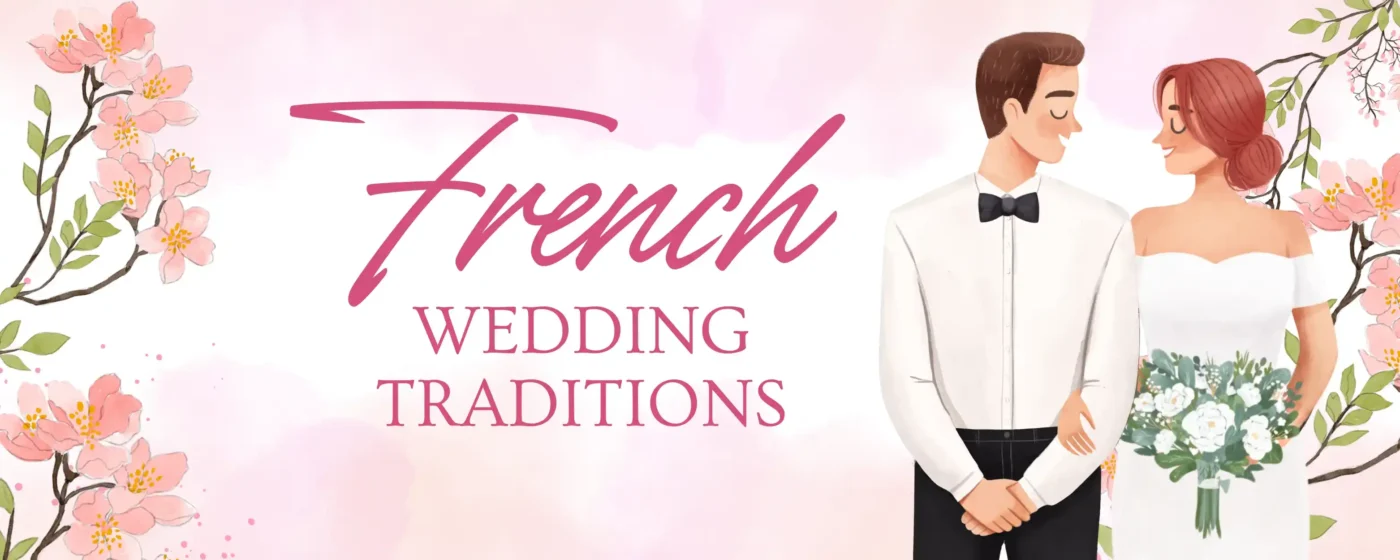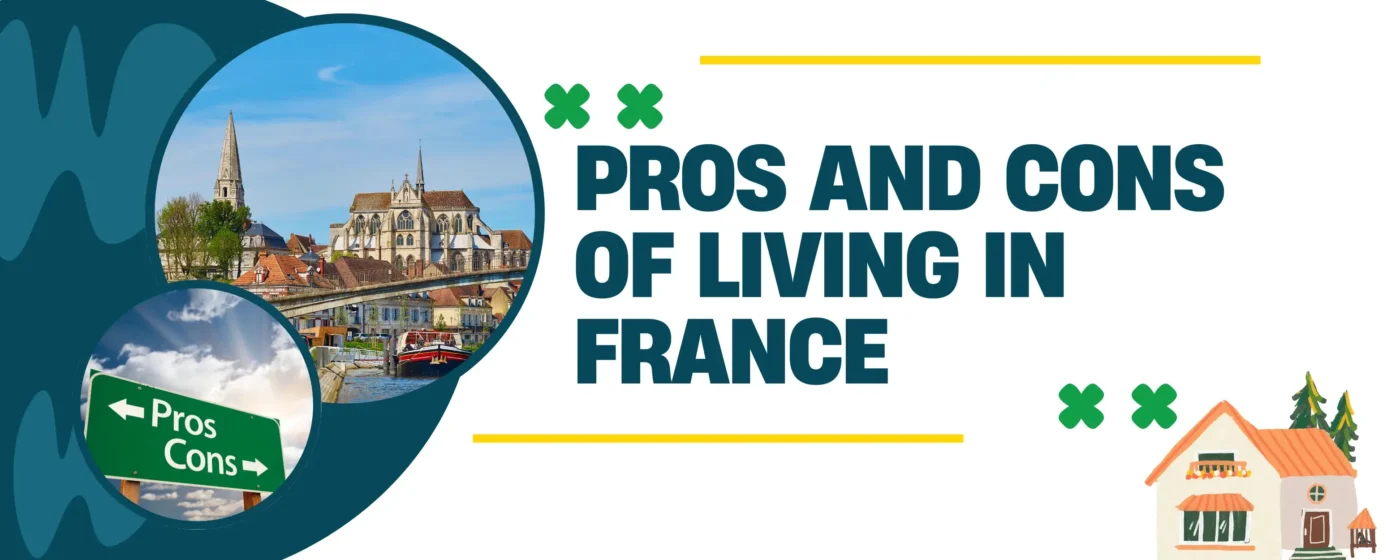French weddings, like the timeless romance depicted in Amélie where the quirky heroine finds love amidst Parisian charm, or the lavish, humorous family affair in The Valet, are more than just ceremonies. They are grand celebrations of love, celebrating family and exquisite taste. These cinematic portrayals capture the very essence of French weddings! French wedding traditions are renowned for their unique blend of elegance and love. Each custom in a French wedding carries a rich cultural significance. They emphasize family unity, the joy of shared experiences, and a deep appreciation for beauty, creating an atmosphere that is both intimately personal and magnificently grand. Are you ready to learn about French wedding traditions? Let’s dive in!
Key Takeaways
- The French wedding is a perfect mixture of elegance, family, heartfelt celebration, and reflection of French culture.
- Understand the different types of Wedding Traditions and Customs, such as La Mairie, Church Ceremony, Engagement Party, etc.
- The cérémonie civile at the town hall is the legally recognized marriage ceremony in France many couples also hold a church ceremony to symbolize.
- The les fiançailles (the engagement) and creating a bridal trousseau are the Pre-wedding customs that highlight family bonds and tradition.
- The la soupe and French-style honeymoons reflect playfulness are post-wedding customs that reflect charm and the lasting romance of French culture.
The French Wedding Journey: From La Mairie to the Honeymoon
La Mairie: The Civil Ceremony
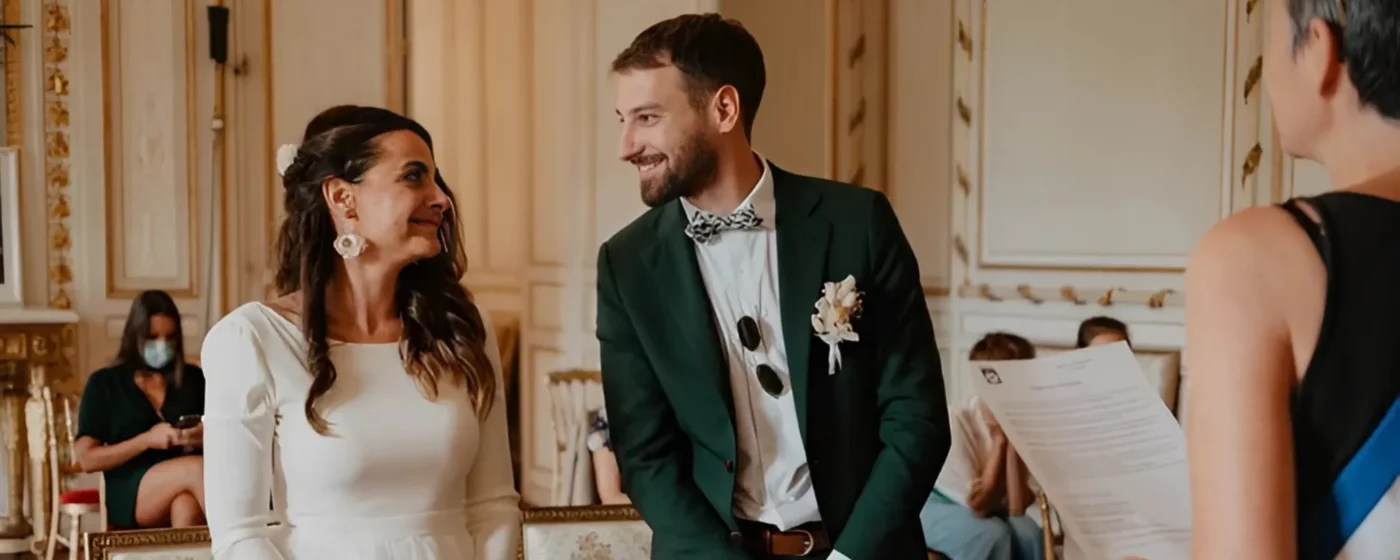
In France, the cérémonie civile at the town hall (mairie) is the only legally binding marriage ceremony. Without it, any religious or symbolic celebration holds no legal value. Officiated by the mayor or a designated deputy, this important step makes sure that the union is recognized by the state. The atmosphere of this civil ceremony is usually intimate and formal. Often attended only by close family and witnesses, it takes place in a dedicated room at the mairie. The mayor reads articles from the Civil Code, emphasizing the legal obligations and rights of marriage, before the couple declares their consent and signs the official register, being legally married.
Church Ceremony: A Spiritual Union
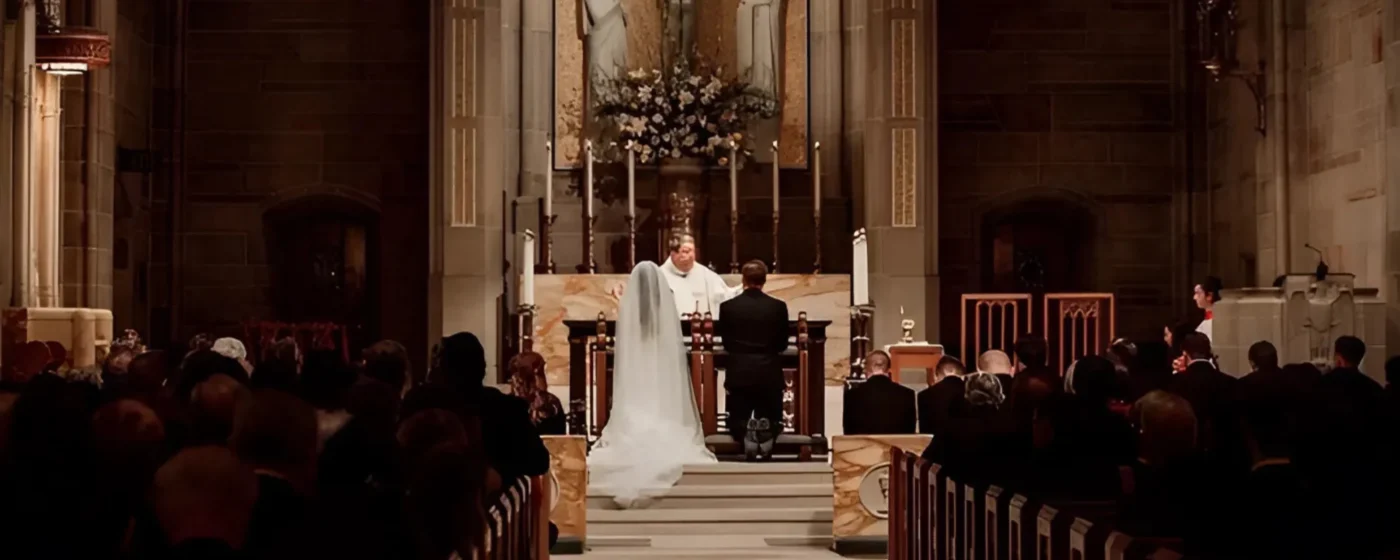
While the civil ceremony is a legal requirement, many French couples still choose to have a traditional Catholic church wedding. This religious ceremony carries immense cultural significance, especially in France – a country with a strong Catholic heritage. For several young religious couples, this church ceremony is significant of their commitment before God and their community. It signifies a sacred union and the couple’s desire for divine guidance in their marriage. This ceremony involves traditional rituals, prayers, hymns, and the exchange of vows within the solemn setting of a French church. Even for those less religious, the church wedding often holds sentimental value, honoring family traditions.
Explore the Top 10 Places to Visit in France in 2025 for stunning cities, cultural gems, and unforgettable travel experiences this year.
Pre-Wedding Traditions That Set the Tone
Engagement Party: An Intimate Affair
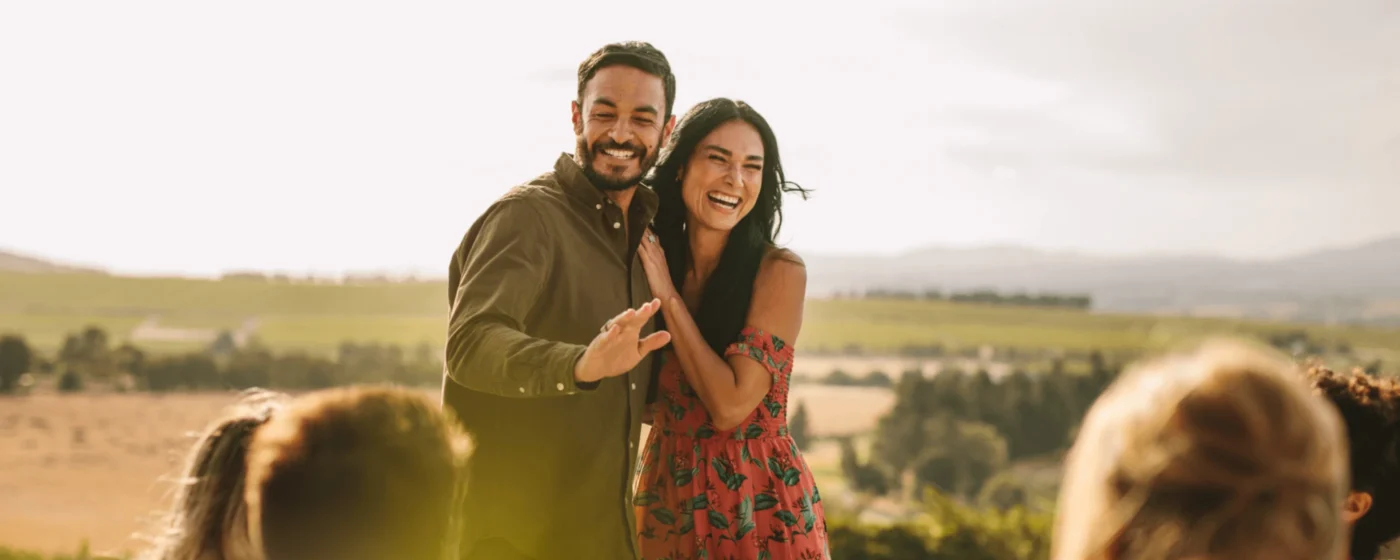
In France, announcing an engagement, commonly known as les fiançailles, is a significant event. It’s customary for the couple to first share the joyous news directly with their closest family members and friends. This initial announcement, not always a grand formal party, takes place during an intimate gathering, such as a special dinner party. The importance of close family and friends in this custom cannot be ignored. One must remember that this is a moment for the two families to officially come together, get to know each other better, and begin to celebrate the upcoming union in a less formal and more personal setting. This smaller, more personal gathering reinforces the French emphasis on familial bonds and shared happiness as the couple embarks on their journey towards a married life.
The Bridal Trousseau: More Than Just a Dress
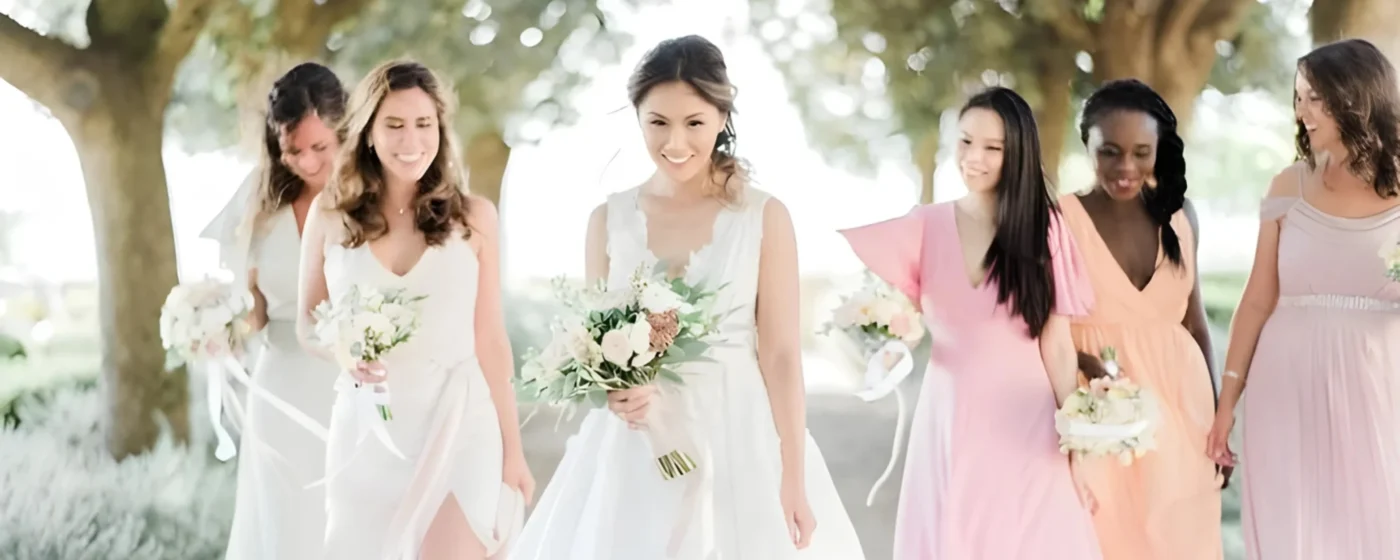
Traditionally, French brides used to focus on creating a ‘trousseau’. This is basically a special bridal wardrobe – a collection of items like fine linens, clothes as well as household things. This collection is often started when the bride-to-be, and usually includes hand-embroidered pieces with her future married initials! This is a simple and fun way to show her family’s status alongside her readiness for married life. While the custom of trousseau is still relevant today, it’s not as strictly enforced or followed. Brides today have more freedom. They tend to choose more elegant but simpler dresses, combining classic French style with modern trends. In recent years, there’s been seen a growing interest in choosing wedding outfits that are more sustainable. This means that these new-age brides lean more towards wedding dresses that can be worn again after their big day.
Wedding Day Rituals That Reflect French Elegance
The Procession
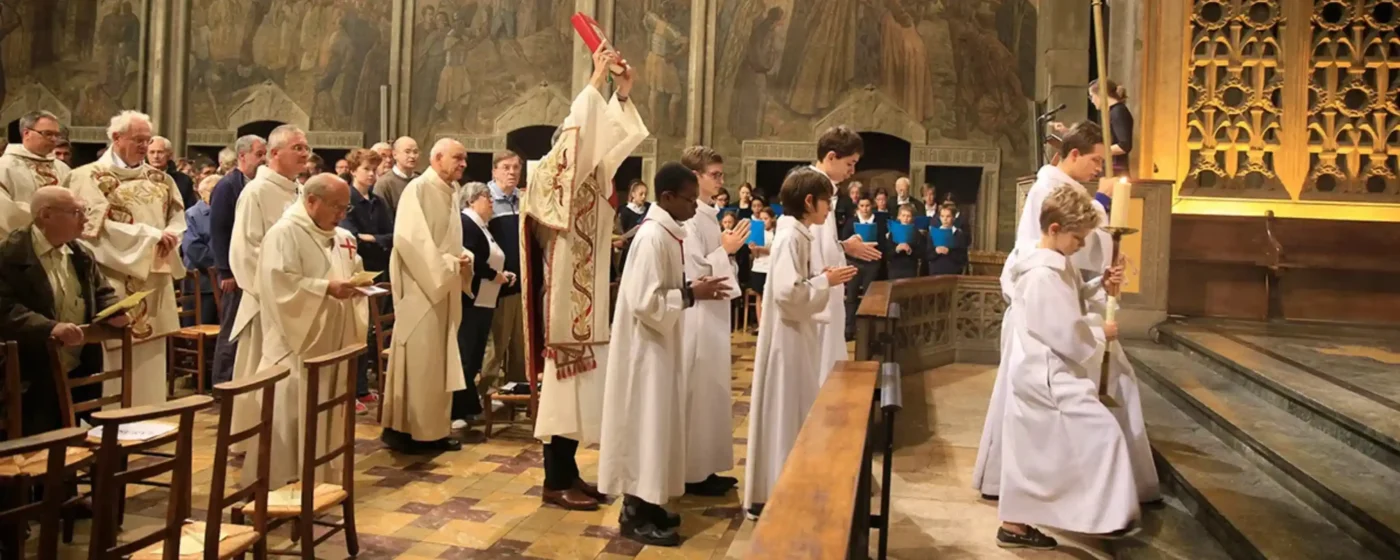
French weddings have a sweet tradition for the bridal procession to walk the couple to the wedding venue. This isn’t just about getting from one place to another. It’s a public announcement of their happiness, with the bride and groom walking arm-in-arm. In many villages, villagers gather along the route, cheering and wishing the couple well. It’s a heartwarming sight, with people throwing flower petals or rice, adding to the festive atmosphere.
Wedding Decorations
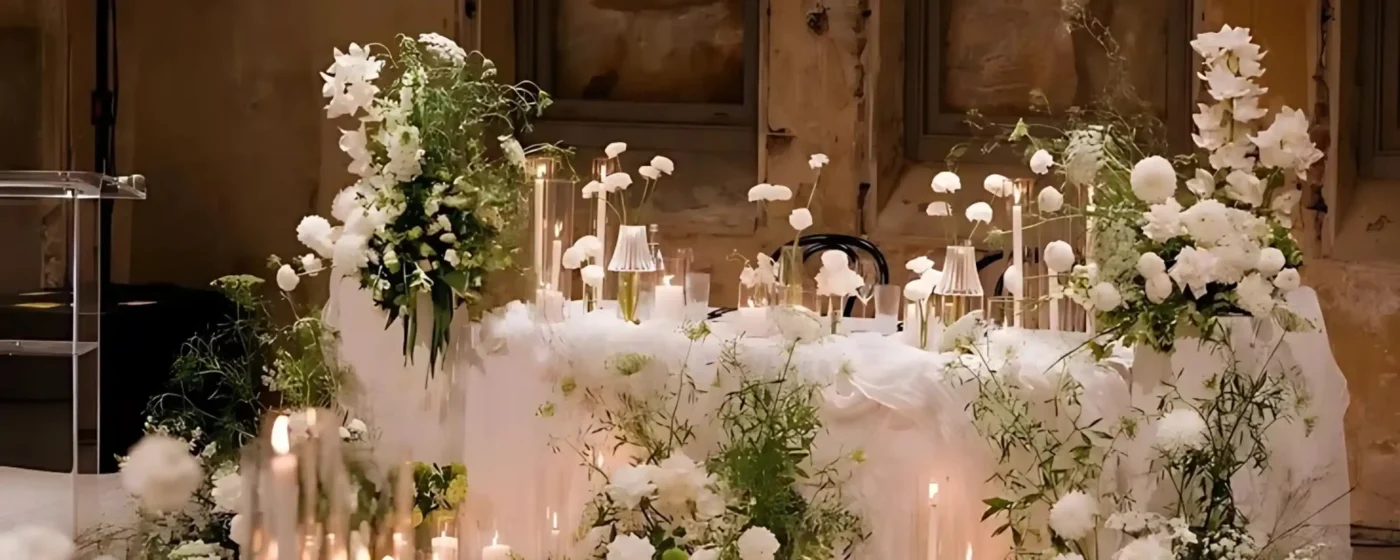
A typical French wedding, much like their culture, is all about “less is more” with a slight tinge of luxury. You’ll often see roses, hydrangeas or peonies in soft, romantic colours like white, cream or pastels. They’re usually arranged naturally in elegant vases, to make them seem not too stiffy. Candles are essential for creating an inviting feel. You’ll find tall, taper candles in elegant candle holders, scattered across tables all around the venue to create a romantic ambiance. Table settings are refined. Common linens include white or ivory, paired with classic china, simple glassware and polished silverware. The focus is not on quantity, but on quality and beauty.
Festivities and Feasts: The Reception Experience
Croquembouche: The Iconic French Wedding Cake
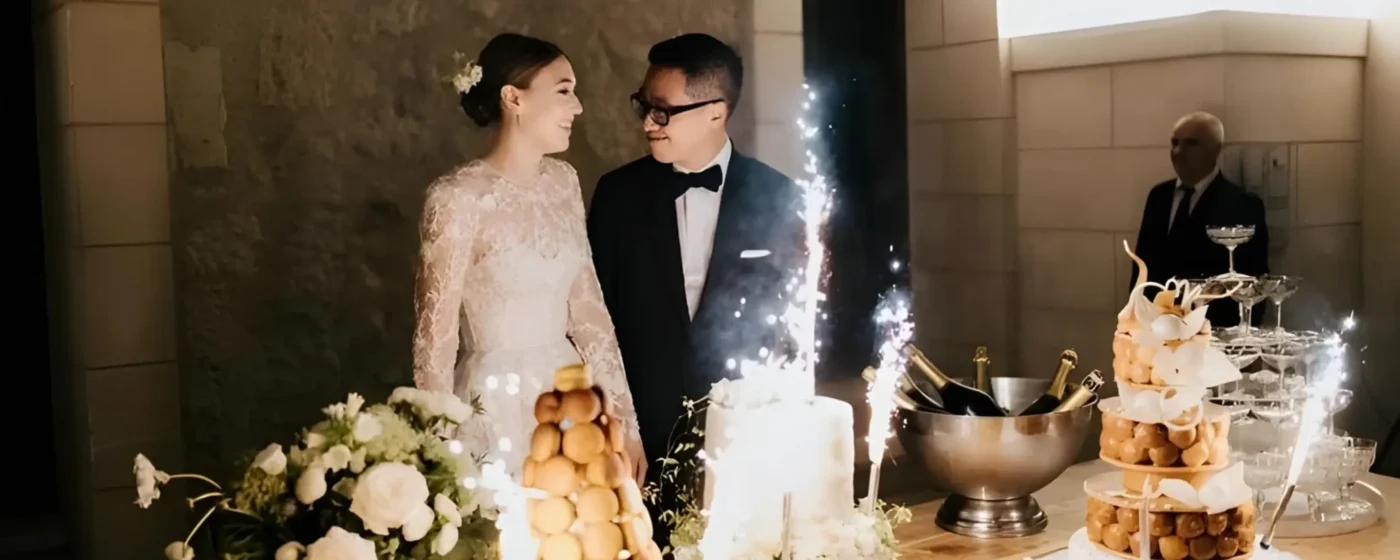
A French wedding is incomplete without the croquembouche – a towering pyramid of cream-filled pastries called choux puffs. These little golden balls are held together with sweet, crunchy caramel threads, making for a show-stopping centerpiece. This impressive dessert symbolises the joining of two families into one sweet union! Each individual puff represents a person, and the caramel holding them together highlights the strong, sweet bond of marriage. This iconic French wedding cake also represents good fortune and sweetness for the newlywed couple’s future and is a delightful treat for everyone to share!
Toasting with Champagne: A French Staple
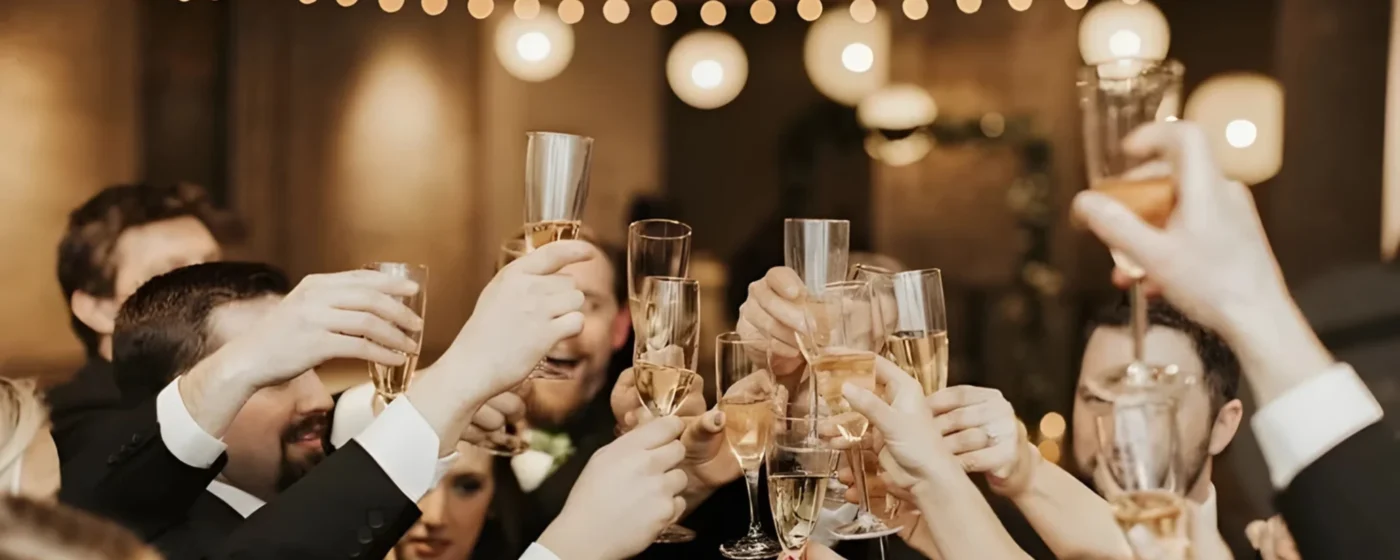
At a French wedding reception, the highlight is the champagne toast. For this tradition, everyone raises a glass of sparkling champagne to honor the newlyweds. This clinking of champagne glasses signifies joy and good wishes for the happy couple. When the cork of the champagne bottle pops and the glasses clink, it creates a feeling of happiness and is a way for all the guests to officially wish the couple a long, happy, and prosperous life together.
Planning a trip to France? Wine lovers will enjoy exploring the 10 France Wineries & Vineyards You Must Visit where tradition meets flavour. Read the guide French vineyards for inspiration.
Unique Post-Wedding Traditions
La Soupe: A Midnight Surprise
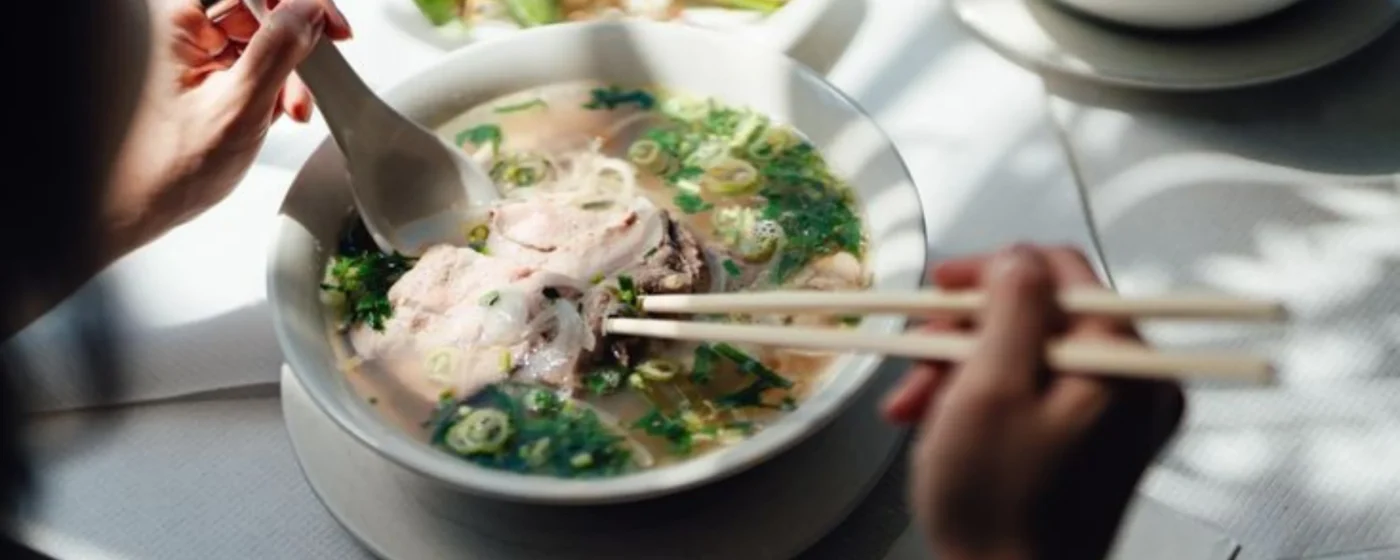
Perhaps one of the most amusing French wedding traditions is serving the newlyweds a soup on their wedding night. But don’t picture a normal bowl of soup! This soup often involves the wedding party bringing the couple a concoction in a chamber pot, usually made from leftover champagne and sometimes chocolate or other sweets. It is supposedly a playful and funny way to give the couple some energy after a long day of celebrating. This is a lighthearted tradition that adds to the joyful chaos and memorable fun of a French wedding!
The Honeymoon: A French Perspective
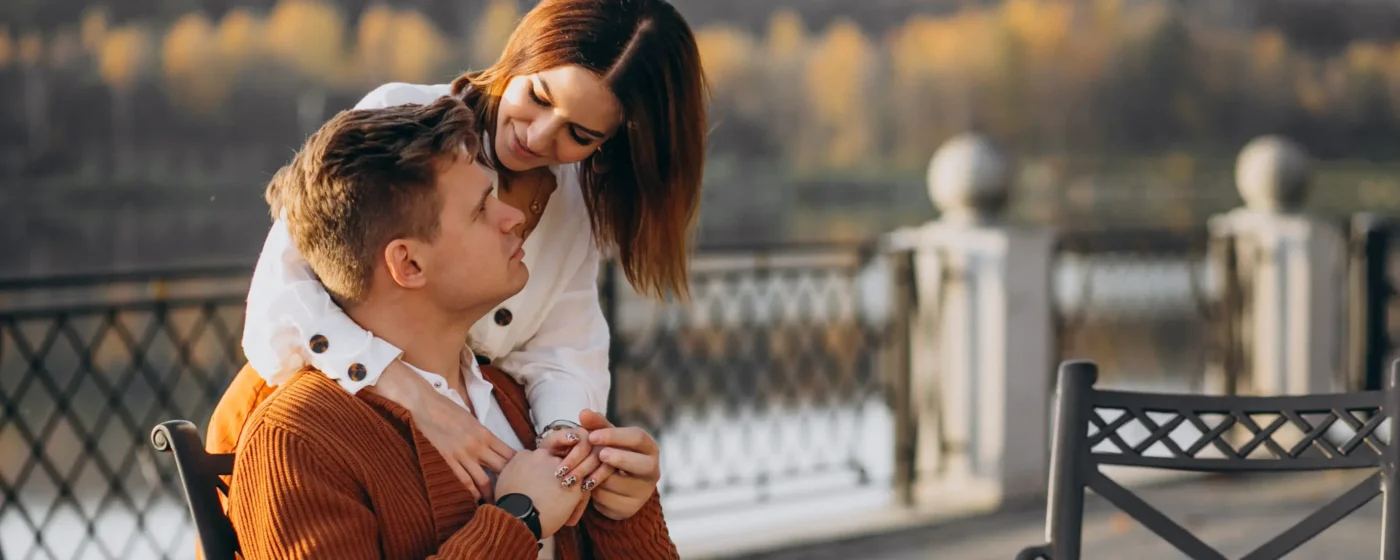
The honeymoon is a special time for newlyweds to relax and celebrate their new life together. Whether it’s a super fancy trip or a quiet, private getaway, the principal idea is for the newly married couple to make lasting memories. It’s a chance to just focus on each other after all the wedding planning and chaos. Some top choices for honeymoon include Paris. This ‘City of Love’ is known for the Eiffel Tower and its charming cafes. For sunny beaches and glamour, the French Riviera (like Nice or Cannes) is perfect. If you love wine and old castles, the Loire Valley or Bordeaux can be wonderful options. Lastly, for a taste of the countryside, Provence with its lavender fields offers a beautiful, peaceful escape!
French weddings are more than just ceremonies. French wedding traditions beautifully combine the charm of a wedding with culture! From the civil ceremony to the grand celebrations, each element in a French wedding is carefully thought out and full of sophistication. With a diverse range of celebrations, from receptions to intimate family gatherings, all are important elements of a French wedding. These traditions aren’t just ceremonies.
They are vibrant expressions of love, family, and the everlasting beauty of French culture. Intrigued by the allure of French traditions and eager to uncover more? Visit La Forêt French Class to explore the language behind these fascinating customs and truly immerse yourself in the heart of France!
Frequently Asked Questions
Q1. What is “Le Vin d’Honneur”?
Ans: Le Vin d’Honneur (the Wine of Honor) is a post-ceremony, pre-dinner cocktail reception. It’s often a shorter, standing affair where a wider circle of friends, colleagues, and acquaintances who weren’t invited to the full dinner can offer their congratulations to the newlyweds.
Q2. Do French couples have bridesmaids and groomsmen like in American weddings?
Ans: French weddings typically have “témoins” (witnesses) who are legally required for the civil ceremony (usually two per person, but it varies). While they often play a supportive role, they don’t usually have matching outfits or the same extensive duties as American bridesmaids and groomsmen!
Q3. Is there a “first dance” tradition in French weddings?
Ans: Oui, a first dance is common in French weddings – often a waltz! However, it is typically less choreographed and elaborate than American first dances. It’s more about the symbolic start of the celebration on the dance floor.

